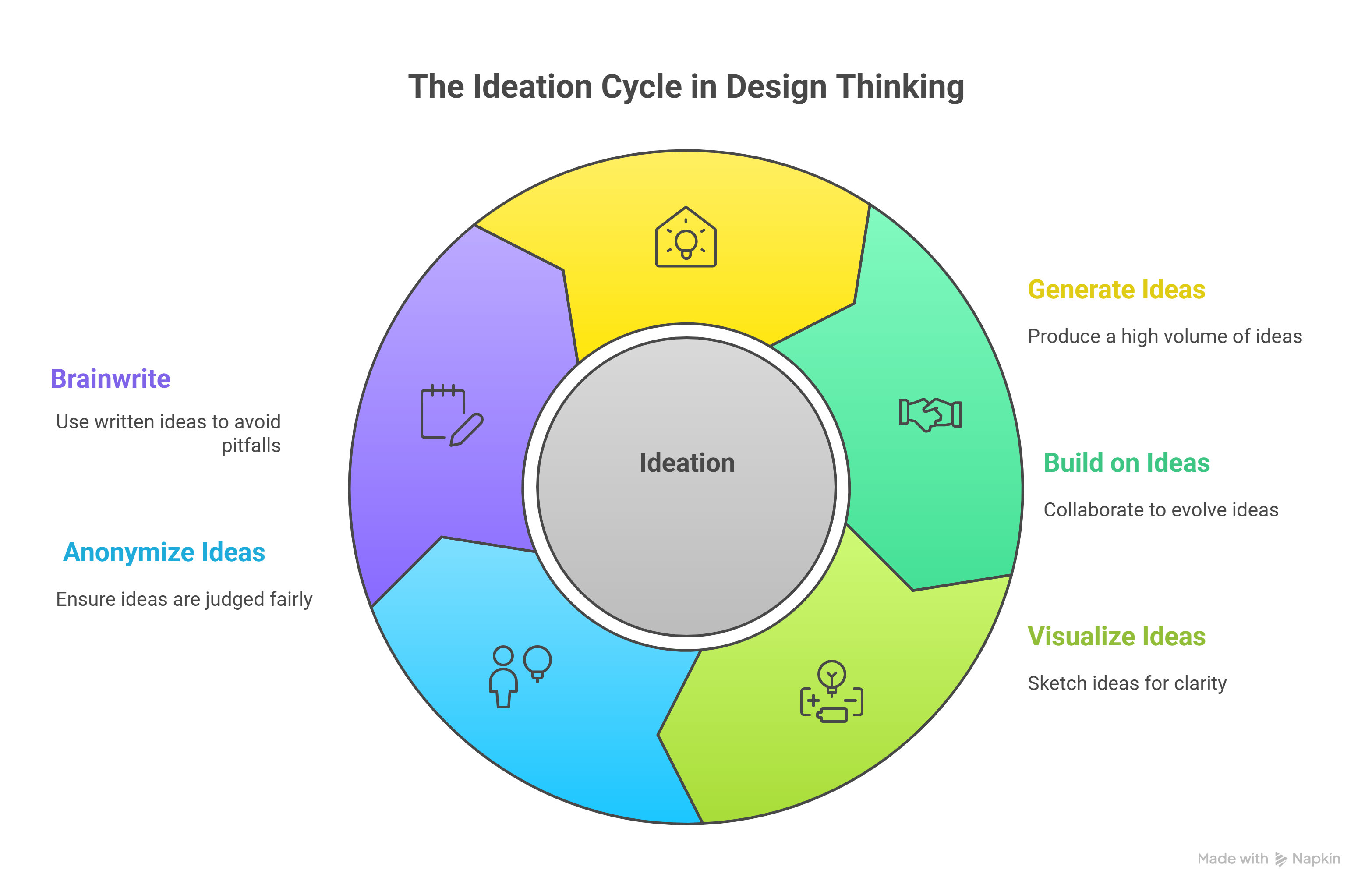Ideation
Ideation: Rules and Techniques
Ideation is the process of generating ideas, and in design thinking, it is a creative and systematic process. The goal is to move beyond conventional methods like traditional brainstorming, which often fail due to various psychological and social factors.
Why Traditional Brainstorming Fails
Traditional brainstorming, where a group of people verbally generates ideas together, is often ineffective for four main reasons:
- Idea Blocking: When one person is speaking, others may have ideas pop into their heads but hold back to avoid interrupting. This can cause those ideas to be forgotten or deemed irrelevant to the current discussion.
- Groupthink: In a group setting, especially when there is a power differential, individuals may feel pressured to conform to the dominant ideas, even if they have better ones. This prevents ideas from being contested and evolved.
- Evaluation Apprehension: People can be apprehensive about sharing radical or "stupid" ideas for fear of being judged by their peers or superiors. This stifles creativity and radical thinking.
- Social Loafing: In a group, not everyone exerts the same effort. Some people may free-ride on the work of others, leading to a decrease in overall productivity.
Rules of Ideation in Design Thinking
Design thinking offers a more methodical approach to ideation to counter the pitfalls of traditional brainstorming.
- Quality from Quantity: The first rule is to generate a large quantity of ideas, as a few good ideas will inevitably emerge from a large pool of average ones. This is a principle seen in nature and in the work of highly productive creative individuals who relentlessly produce a high volume of work, with some pieces becoming masterpieces by sheer law of averages. A good practice is to set a high target for the number of ideas, such as 100, to push the team beyond obvious solutions.
- Build on Others' Ideas: Instead of immediately countering an idea with "no, but," a design thinker should respond with "yes, and" to build on it. This approach fosters a collaborative environment, prevents animosity, and encourages the continuous evolution of ideas. It requires deferring judgment, a key tenet of design thinking.
- Sketch, Don't Speak: Ideation should be a visual, not just a verbal, exercise. Drawing ideas with hands, rather than just speaking them, forces you to detail them out, which provides clarity for both yourself and others. This also helps to foster an anonymous brainstorming environment where ideas are judged on their merit, not on the reputation or seniority of the person who proposed them.
- Anonymity Breeds Creativity: Anonymity allows for radical ideas to be proposed without the fear of judgment. In an anonymous session, ideas can be openly critiqued and improved, as no one has a vested interest in protecting a particular idea. This is similar to how superheroes wear masks to do things a person with a public identity might not dare to do.
Brainwriting: A Better Alternative
Brainwriting is a technique that addresses the failures of traditional brainstorming. In this method, team members write down their ideas individually on Post-it notes without speaking. These ideas are then collected, read, and built upon anonymously by other team members. This process:
- Prevents idea blocking because participants can write down their thoughts without waiting for a turn.
- Reduces social loafing as everyone is required to contribute ideas in writing.
- Eliminates evaluation apprehension and groupthink, as the ideas are anonymous and can be judged on their own merit, regardless of who proposed them.
The ideal team size for ideation is two people. This ensures that both individuals are aligned on the objective but have enough personality differences to foster creative thinking.

